Vulcanstein build
#1
Vulcanstein build
This 3.0 Vulcan was assembled from mostly new parts from across the years, 1990 to 2002.
Already completed and on the road for 3+ months and 500+ miles in an '89 Aerostar.
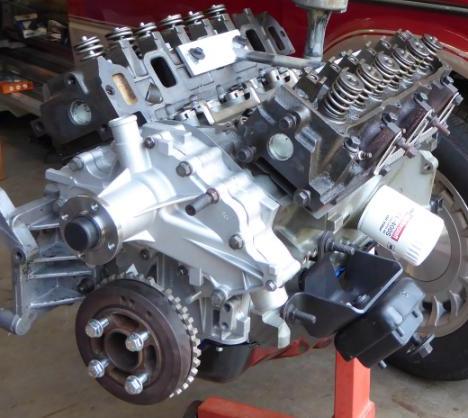
The immediate motivation was that, in the prior 100K engine, there developed a knocking noise.
I eventually credited myself with a spot-on guess, a tappet rather than something else.
The tappet in cylinder 1 was flattening, causing it to stick in its bore.
By itself a "$4 problem", but there had to be something that was the root cause, something very local.
Perhaps an oiling problem. Never found anything definite.
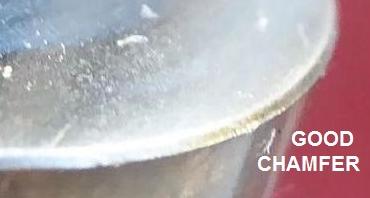
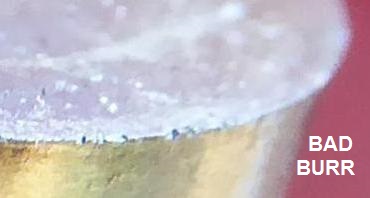
Instead of traveling the route of diagnostics and repair, and looking to avoid a repeat of burred tappet, I instead took the opportunity to build a new engine,
reset the clock and also check off a list of easy tricks to reduce noise-vibration-harshness and improve power output.
****** Less NVH ********
NVH was address by the selection of a remanufactured 1995+ crank, featuring more, shapely counterweights.
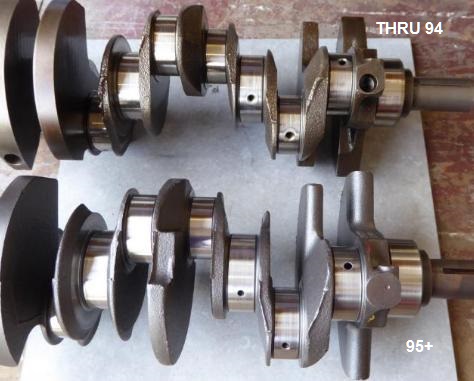
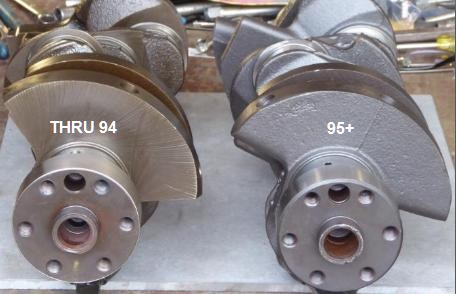
A corresponding new-old-stock 1995-97 block was pricey and distributor had placed restrictions on residential delivery, therefore we have a much cheaper NOS 1992-94 block, without the additional ribbing found on the later.
Of course the Vulcan continued on past the final year of the Aerostar but the compatibility of accessory mounts was not known to me.
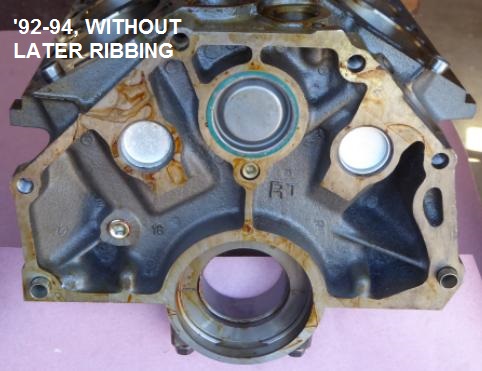
One benefit of NOS is that the block is factory perfect and takes STD size pistons.
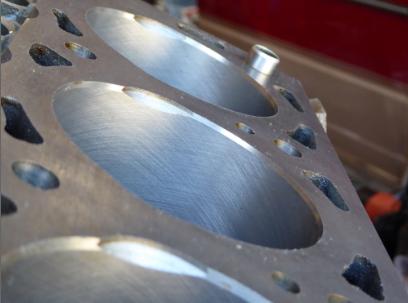
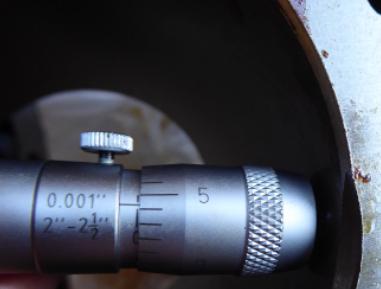
******* More power *******
I did not take any dyno measurement, either before or after, but seat-of-the-pants experience in builds and swaps leads me to guess there is 5-10% more torque.
However, I already spent most of that by simultaneously loosening the rear gearing from 4.10 to 3.73.
The Aerostar now glides down the road, feeling less bound up by relatively noisy and reluctant engine.
Half of the increased output I'll attribute to a migration from flat tappet to roller lifters.
This allows for a cam profile that features a flatter lobe with faster ramping, allowing more air in compared to the flat tappet engine.
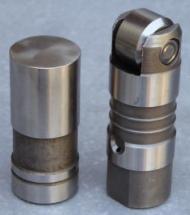
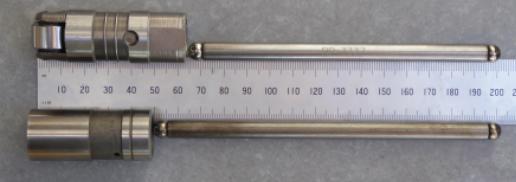
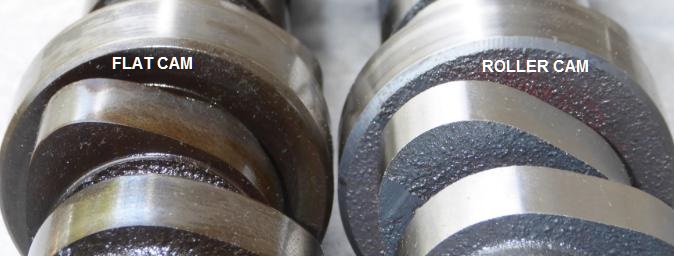
A migration to roller lifters, forces a swapping out of any pre-1992 block, because ...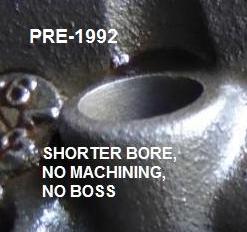
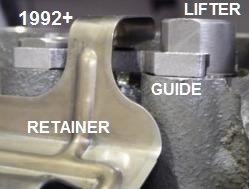
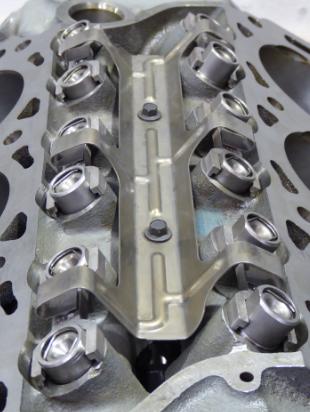
The other half of the torque increase is due to the piston features.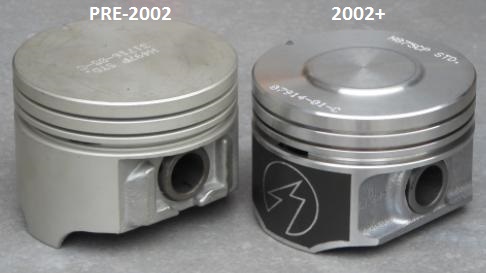
This weight sampling of the later piston plus pin came in at 506 grams, versus the 510 suggested by the Sealed Power H875CP data sheet.
This also compares to 529 grams (measured) for the earlier piston.
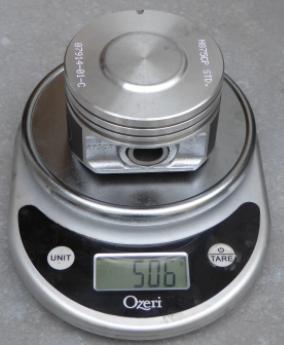
A real engine builder would then take the cue to have the rotating mass balanced.
There are a list reasons why this wasn't done, but they fall into three categories.
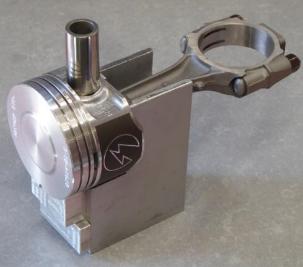
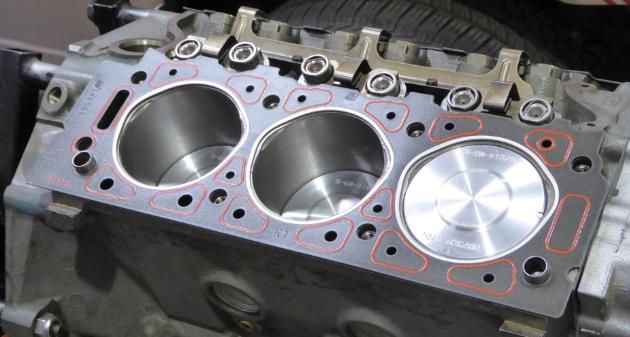
Actually measurements and a little math told me my original engine had a compression ratio in the range of 9.0 to 9.3.
The new engine is in the 9.3 to 9.5 range.
This on an engine with no knock sensing and sloppy timing off the distributor.
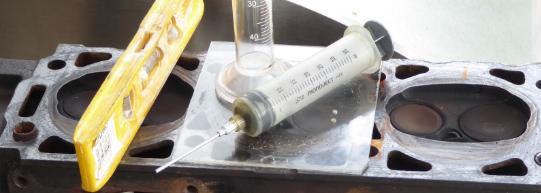
There is a back-burner plot to someday get knock retrofitted.
This is a challenging complication on a pull rod engine, because the valley, where we want to retrofit, is already filled with stuff and has an oil tight cover, the intake manifold.
That plan would also compete with the SHO V6 option readily available on the next engine stand.
Features a knock sensor already, along with a 10.5 CR and about 30% higher output, but is burdened with a half-dozen other engineering challenges.
My understanding is that the rotating assembly is highly balanced, to retain smooth operation to the 8K redline.
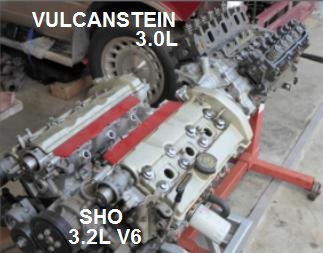
Heads are from the prior '90 engine, cleaned up, seals replaced.
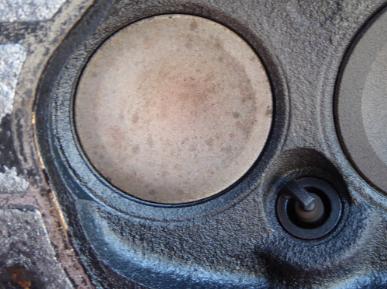
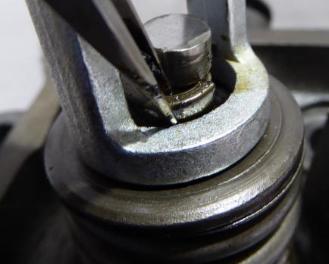
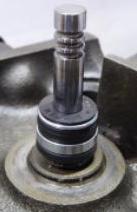
"While we were in there" we established an upgrade path of engine electronics by bringing in toothed harmonic balancer. Pre-95 timing is taken off the distributor.
The 95+ sensor for the toothed wheel mounts to the 95+ chain cover.
Shown, '95-96 style sensor.
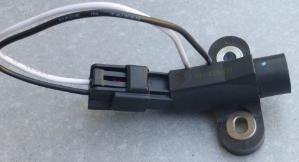
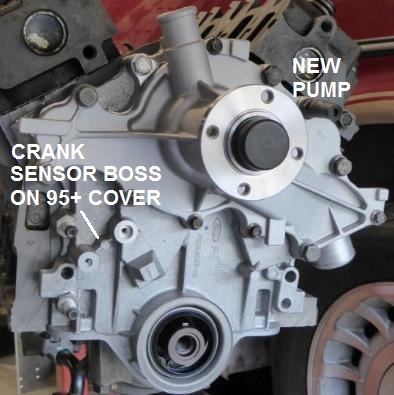
The later chain is thinner than earlier, therefore requires the later oil pan and gasket.
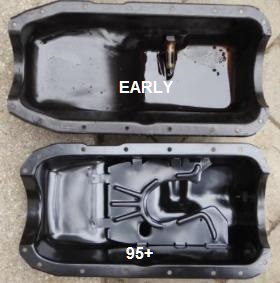
Because the later pan has a different profile, the later oil pump is required.
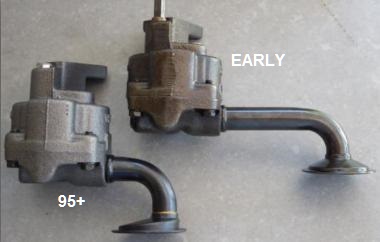
All said and done, at the bottom end, no original part was reused with the exception of the reman'd crank and several rods.
All else was either new or new-old-stock parts.
********************
Fyi, the bolt circle on the toothed harmonic balance is now 75mm versus 70mm for the earlier style, so one has to either acquire an updated accessory pulley, or weld and redrill the old one.
The new bolt pattern also gives upsize the bolts from M6 to M8.
Good thing since my originals had sheared in 1 out of 4 places, with a second ready to go any time.
The toothed wheel plus that knock sensor someday, sets us up for perhaps another 5% increase in output.
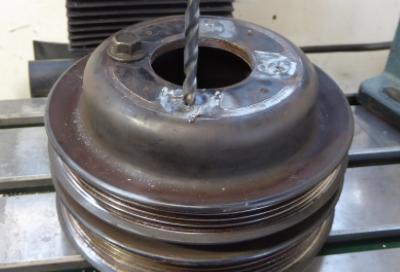
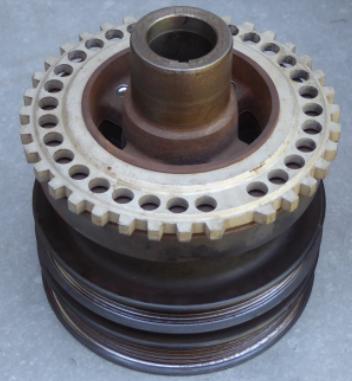
Already completed and on the road for 3+ months and 500+ miles in an '89 Aerostar.

The immediate motivation was that, in the prior 100K engine, there developed a knocking noise.
I eventually credited myself with a spot-on guess, a tappet rather than something else.
The tappet in cylinder 1 was flattening, causing it to stick in its bore.
By itself a "$4 problem", but there had to be something that was the root cause, something very local.
Perhaps an oiling problem. Never found anything definite.


Instead of traveling the route of diagnostics and repair, and looking to avoid a repeat of burred tappet, I instead took the opportunity to build a new engine,
reset the clock and also check off a list of easy tricks to reduce noise-vibration-harshness and improve power output.
****** Less NVH ********
NVH was address by the selection of a remanufactured 1995+ crank, featuring more, shapely counterweights.


A corresponding new-old-stock 1995-97 block was pricey and distributor had placed restrictions on residential delivery, therefore we have a much cheaper NOS 1992-94 block, without the additional ribbing found on the later.
Of course the Vulcan continued on past the final year of the Aerostar but the compatibility of accessory mounts was not known to me.

One benefit of NOS is that the block is factory perfect and takes STD size pistons.


******* More power *******
I did not take any dyno measurement, either before or after, but seat-of-the-pants experience in builds and swaps leads me to guess there is 5-10% more torque.
However, I already spent most of that by simultaneously loosening the rear gearing from 4.10 to 3.73.
The Aerostar now glides down the road, feeling less bound up by relatively noisy and reluctant engine.
Half of the increased output I'll attribute to a migration from flat tappet to roller lifters.
This allows for a cam profile that features a flatter lobe with faster ramping, allowing more air in compared to the flat tappet engine.



A migration to roller lifters, forces a swapping out of any pre-1992 block, because ...
- The lifter bores are not tall enough,
- The area at the top of the bore lacks the seating for the guide
- Ribs spanning the valley do not have the boss's for mounting the guide retainer spider.



The other half of the torque increase is due to the piston features.
- The 2002 piston is domed instead of the previous flat top.
- Compression height is increased.
- The skirts are shorter, and coated.
- The top ring is thinner.

This weight sampling of the later piston plus pin came in at 506 grams, versus the 510 suggested by the Sealed Power H875CP data sheet.
This also compares to 529 grams (measured) for the earlier piston.

A real engine builder would then take the cue to have the rotating mass balanced.
There are a list reasons why this wasn't done, but they fall into three categories.
- The first category of reasons is that, as a general rule, you don't try to solve a problem before first confirming that a problem exists and is relevant and that a solution is known and can be applied.
- The second category is that I'm skeptical that without going back to the original finite element CAD simulations, that later on a street shop can go in and instantly and exactly confirm a problem and know that it is relevant.
- The third category is that when work is subcontracted, the result that comes back is a mystery at best. At worst, the subcontractor might swear their belief that they fixed a known problem, when in fact they had broke a formerly acceptable and cost effective situation.


Actually measurements and a little math told me my original engine had a compression ratio in the range of 9.0 to 9.3.
The new engine is in the 9.3 to 9.5 range.
This on an engine with no knock sensing and sloppy timing off the distributor.

There is a back-burner plot to someday get knock retrofitted.
This is a challenging complication on a pull rod engine, because the valley, where we want to retrofit, is already filled with stuff and has an oil tight cover, the intake manifold.
That plan would also compete with the SHO V6 option readily available on the next engine stand.
Features a knock sensor already, along with a 10.5 CR and about 30% higher output, but is burdened with a half-dozen other engineering challenges.
My understanding is that the rotating assembly is highly balanced, to retain smooth operation to the 8K redline.

Heads are from the prior '90 engine, cleaned up, seals replaced.



"While we were in there" we established an upgrade path of engine electronics by bringing in toothed harmonic balancer. Pre-95 timing is taken off the distributor.
The 95+ sensor for the toothed wheel mounts to the 95+ chain cover.
Shown, '95-96 style sensor.


The later chain is thinner than earlier, therefore requires the later oil pan and gasket.

Because the later pan has a different profile, the later oil pump is required.

All said and done, at the bottom end, no original part was reused with the exception of the reman'd crank and several rods.
All else was either new or new-old-stock parts.
********************
Fyi, the bolt circle on the toothed harmonic balance is now 75mm versus 70mm for the earlier style, so one has to either acquire an updated accessory pulley, or weld and redrill the old one.
The new bolt pattern also gives upsize the bolts from M6 to M8.
Good thing since my originals had sheared in 1 out of 4 places, with a second ready to go any time.
The toothed wheel plus that knock sensor someday, sets us up for perhaps another 5% increase in output.


Thread
Thread Starter
Forum
Replies
Last Post
Johnkimble
1973 - 1979 F-100 & Larger F-Series Trucks
103
11-07-2020 08:36 PM
ktgovols
1948 - 1956 F1, F100 & Larger F-Series Trucks
34
02-07-2017 08:38 PM
MikeWire
FE & FT Big Block V8 (332, 352, 360, 390, 406, 410, 427, 428)
26
02-07-2014 11:25 AM


